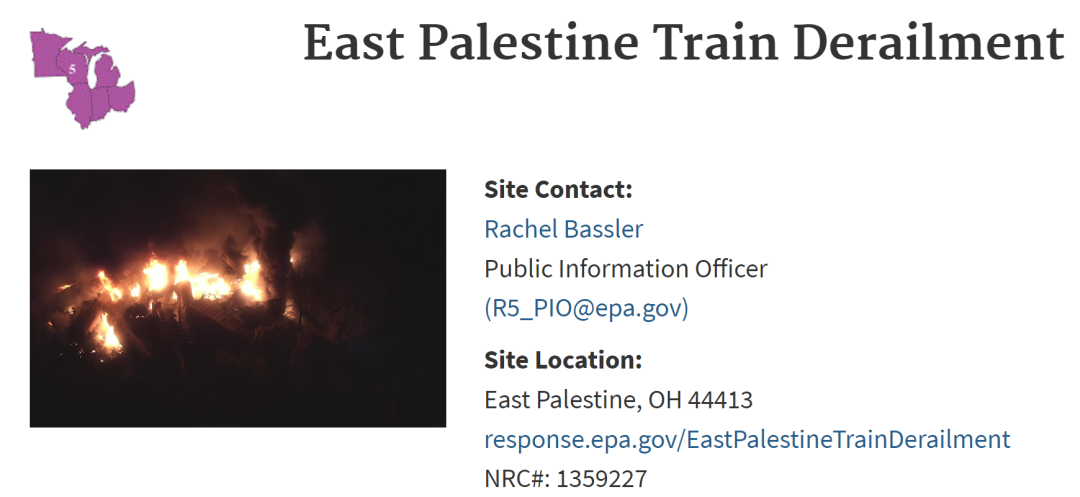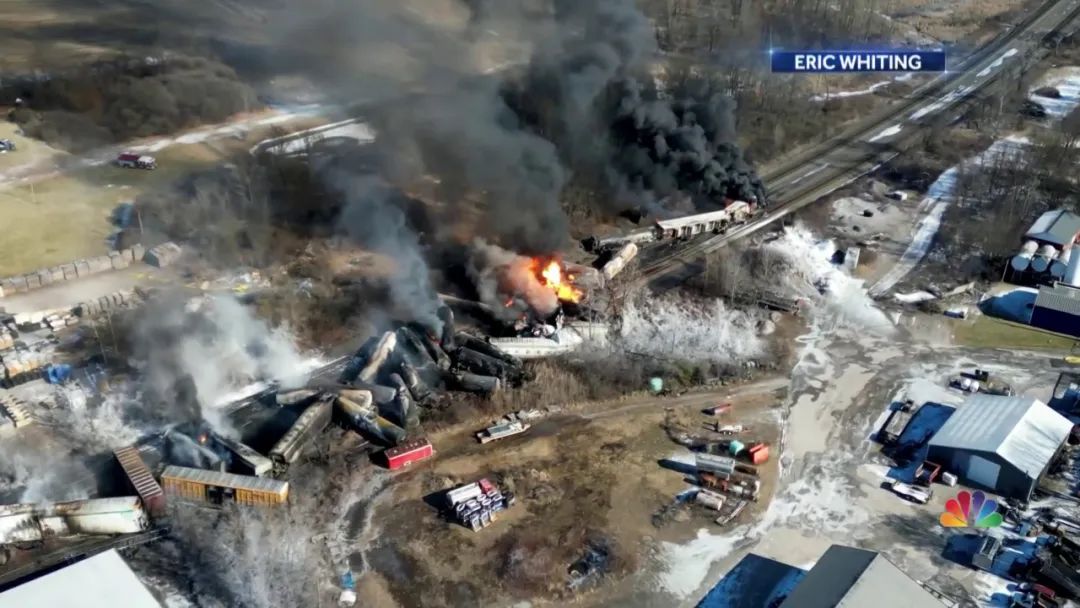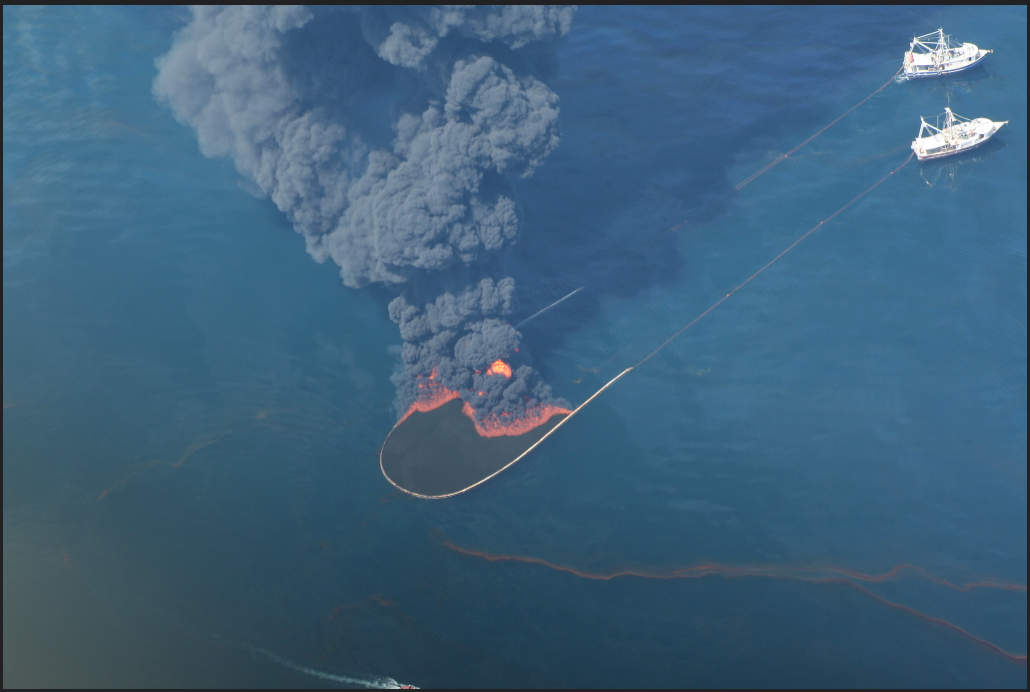Epa monitoring of derailed chemical spills
The derailment occurred in East Palestine, Ohio, at around 8:55 p.m. on February 3, 2023, and the railroad company reported it to the National Emergency Center at 10:53 p.m. Twenty of the 150 train cars were classified as carrying dangerous materials. About 50 cars were affected by the derailment and the remaining cars were removed and removed from the site.
 Feb. 4: The EPA deploies real-time air monitoring instruments at 12 locations around the fire and in neighboring communities. In addition, air samples were taken in the town centre for laboratory analysis. The EPA is monitoring volatile organic compounds (also known as VOCs), including vinyl chloride and butyl acrylate. Levels of carbon monoxide, oxygen, hydrogen sulfide, hydrogen cyanide, phosgene and hydrogen chloride are also being monitored, and the flammability of surrounding gases is being measured.
In addition to fixed air monitoring stations, the EPA also uses hand-held monitors to monitor areas with noticeable odors. Butyl acrylate has a very low odor threshold and is easy to smell, but does not affect health.
Two surface streams were found to be contaminated: Sulphur Creek and Leslie Creek. Under the supervision of the state EPA, the railroad company arranged for the installation of containment booms and underflow DAMS to limit the flow of contaminated water and to control and collect floating products. The EPA takes water samples from these streams and sends them to a laboratory for analysis. Emergency responders noticed the affected aquatic life and notified the Ohio Department of Natural Resources and the U.S. Department of the Interior. The state Department of Natural Resources was on site to assess the situation and impact on aquatic life. Downstream water companies were also notified.
Update Feb. 5: EPA Community air monitoring data did not detect any pollutants other than particulate matter. Low levels of volatile organic compounds and nitrogen dioxide were detected in the work area of the crash. Recovery operations using vacuum trucks and adsorbent pads in two surface streams are in progress.
The East Palestine Water Works confirmed that it had not been adversely affected.
(Note: Residents evacuated the area the same day, and authorities prepared to burn the remaining compounds under surveillance.)
Updated on February 6:
The U.S. Environmental Protection Agency moved air monitoring stations in preparation for the planned fire control.
Feb. 4: The EPA deploies real-time air monitoring instruments at 12 locations around the fire and in neighboring communities. In addition, air samples were taken in the town centre for laboratory analysis. The EPA is monitoring volatile organic compounds (also known as VOCs), including vinyl chloride and butyl acrylate. Levels of carbon monoxide, oxygen, hydrogen sulfide, hydrogen cyanide, phosgene and hydrogen chloride are also being monitored, and the flammability of surrounding gases is being measured.
In addition to fixed air monitoring stations, the EPA also uses hand-held monitors to monitor areas with noticeable odors. Butyl acrylate has a very low odor threshold and is easy to smell, but does not affect health.
Two surface streams were found to be contaminated: Sulphur Creek and Leslie Creek. Under the supervision of the state EPA, the railroad company arranged for the installation of containment booms and underflow DAMS to limit the flow of contaminated water and to control and collect floating products. The EPA takes water samples from these streams and sends them to a laboratory for analysis. Emergency responders noticed the affected aquatic life and notified the Ohio Department of Natural Resources and the U.S. Department of the Interior. The state Department of Natural Resources was on site to assess the situation and impact on aquatic life. Downstream water companies were also notified.
Update Feb. 5: EPA Community air monitoring data did not detect any pollutants other than particulate matter. Low levels of volatile organic compounds and nitrogen dioxide were detected in the work area of the crash. Recovery operations using vacuum trucks and adsorbent pads in two surface streams are in progress.
The East Palestine Water Works confirmed that it had not been adversely affected.
(Note: Residents evacuated the area the same day, and authorities prepared to burn the remaining compounds under surveillance.)
Updated on February 6:
The U.S. Environmental Protection Agency moved air monitoring stations in preparation for the planned fire control. Update Feb. 7: During yesterday's fire control, EPA air monitoring detected particulate matter from the combustion. No chemical contaminants of concern were detected in the hours following the controlled fire. Residents in the area and dozens of miles away may have smelled coming from the scene. This is because the by-products of controlled combustion have a lower odor threshold. This means that people may smell these pollutants at levels far below those considered dangerous.
The U.S. Environmental Protection Agency continues to monitor air throughout the community. This morning, the EPA's Airborne Spectrophotometric Environmental Acquisition Technology aircraft made a flyby above the derailment site to gather more data on air quality.
Update Feb. 7: During yesterday's fire control, EPA air monitoring detected particulate matter from the combustion. No chemical contaminants of concern were detected in the hours following the controlled fire. Residents in the area and dozens of miles away may have smelled coming from the scene. This is because the by-products of controlled combustion have a lower odor threshold. This means that people may smell these pollutants at levels far below those considered dangerous.
The U.S. Environmental Protection Agency continues to monitor air throughout the community. This morning, the EPA's Airborne Spectrophotometric Environmental Acquisition Technology aircraft made a flyby above the derailment site to gather more data on air quality.
 The aircraft is used to monitor events such as oil spills at sea
Epa is working with other agencies to develop procedures for residents to lift evacuations and safely return home.
Update Feb. 9: The EPA is working with the Ohio EPA to investigate residual soil contamination and impact on surface water.
Feb. 10 Update: Railroad contractors install a dam and a water bypass at Sulfur Creek to prevent further contamination of downstream waters. They also stopped the rest of the spill from flowing into the stream.
Update Feb. 11: The EPA has issued a potential liability notice to the railroad company, which documents the release of hazardous materials and the contamination of the environment after the train derailment. The railway company may be responsible for the cost of disposal. Epa continues to assist agencies with voluntary residential air inspections and has inspected 105 residential homes.
Feb. 12 Update: Air monitoring after the fire was extinguished did not identify any issues of concern. There have been 210 indoor air tests, and so far no vinyl chloride or hydrogen chloride has been detected. There are 218 families still to be measured.
The aircraft is used to monitor events such as oil spills at sea
Epa is working with other agencies to develop procedures for residents to lift evacuations and safely return home.
Update Feb. 9: The EPA is working with the Ohio EPA to investigate residual soil contamination and impact on surface water.
Feb. 10 Update: Railroad contractors install a dam and a water bypass at Sulfur Creek to prevent further contamination of downstream waters. They also stopped the rest of the spill from flowing into the stream.
Update Feb. 11: The EPA has issued a potential liability notice to the railroad company, which documents the release of hazardous materials and the contamination of the environment after the train derailment. The railway company may be responsible for the cost of disposal. Epa continues to assist agencies with voluntary residential air inspections and has inspected 105 residential homes.
Feb. 12 Update: Air monitoring after the fire was extinguished did not identify any issues of concern. There have been 210 indoor air tests, and so far no vinyl chloride or hydrogen chloride has been detected. There are 218 families still to be measured.



 WhatsApp Scan for more latest news
WhatsApp Scan for more latest news 